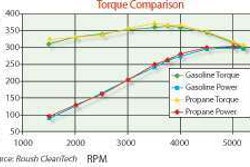The results are in and signal synchronization projects along three major corridors in California have decreased travel times for commuters by 14 percent, decreased the number of stops by 31 percent and increased travel speeds by 17 percent.
Completed in June, the Measure M2 project synchronized more than 252 traffic intersections along 46 miles of roadway in Orange County that more than 30,000 vehicles use on a daily basis, according to the Orange County Transportation Authority (OCTA).
The project covered Bristol Street/State College Boulevard, Harbor Boulevard, and Westminster Avenue/17th Street in the following cities:
• Brea
• Costa Mesa
• Fountain Valley
• Fullerton
• Garden Grove
“Signal synchronization delivers results drivers can benefit from every day,” said OCTA Chair Patricia Bates, also the fifth district supervisor, in a written statement. “With this investment, we are able to eliminate wasted time, save drivers money on gas and help the environment by reducing carbon emissions.”
Signal synchronization helps reduce stop-and-go traffic patterns and improve travel flow by coordinating green lights for a series of signals. When implemented, drivers can often pass through a number of green lights before stopping.
During the next three years, drivers are estimated to save $10 million, or 2.5 million gallons of gasoline because of less time spent on the road, OCTA says.
Not only does signal synchronization decrease travel times, it also helps to reduce emissions. The Bristol Street/State College Boulevard, Harbor Boulevard and Westminster Avenue/17th Street project saw an overall 13 percent decrease in greenhouse gas emissions.
The project cost $1.8 million to complete and was funded through Measure M2 and state dollars.
Signal synchronization is a significant part of Measure M2 with 2,000 signals planned for synchronization covering more than 800 miles of Orange County’s streets.









